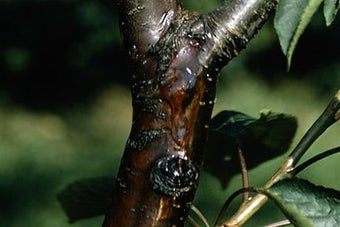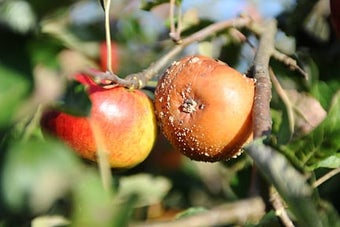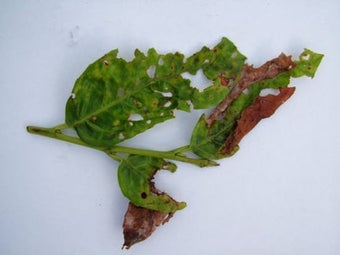
Quick facts
Common name - Cherry leaf scorch and leaf spot
Scientific name - Apiognomoniaerythrostoma and Blumeriella jaapii
Plants affected - Cherry, Prunus species
Main symptoms - Leaf scorch leaves shrivel and fail to drop in autumn. Leaf spot leaves yellow and drop prematurely
Caused by - Fungi
Timing - Spores active in spring
What are cherry leaf scorch and leaf spot?
Cherry leaf scorch and leaf spot are diseases of Prunus spp. caused by the pathogenic fungi Apiognomoniaerythrostoma and Blumeriella jaapii. The leaves either shrivel, turn brown and remain hanging on the tree throughout winter in the case of leaf scorch, or become yellowed, mottled and drop prematurely in the case of leaf spot.
Symptoms
Leaf scorch:
- Leaves become blotchy and brown in summer, then completely brown and shrivelled
- Hard spots may develop in fruit
- Affected leaves are not shed, but remain hanging on the tree during the winter
Leaf spot:
- Leaves develop purple spots, sometimes small holes ('shotholes'), or bright orange colouration and drop prematurely
- Alternatively, leaves develop a blotchy, yellow appearance and drop prematurely
- Under wet conditions, flecks of white fungus may be seen on the underside of affected leaves

Control
Non-chemical control:
- For leaf spot, collection and destruction of fallen leaves will reduce the amount of fungus available for infection the following year. Removal of shrivelled leaves affected by leaf scorch would have the same effect, but is not usually feasible
Resistance: Ornamental cherries, Prunus 'Kanzan' and P. 'Fugenzo' are reputedly resistant to leaf spot
Chemical control:
No chemical controls are specifically available for these diseases.
Biology
Leaf scorch was an uncommon disease in the UK for many years, but since the early 1990's it has become more common, especially in southern England, and appears to be spreading. It principally attacks Prunus avium (wild cherry and its cultivars) with unconfirmed reports from P. padus (bird cherry); it is recorded attacking P. armeniaca (apricot) in mainland Europe.
The fungus overwinters in the dead hanging leaves, releasing spores to infect the new leaves in the spring and summer of the following year. Infected leaves develop brown blotches, then become completely brown and shrivelled. In the autumn they are not shed, but remain hanging on the tree. Only leaves are affected and despite being striking and unsightly the disease does little damage to the tree.
Leaf spot has been known in the USA and mainland Europe since the 19th century, but only became common in the UK in the 1990's. It attacks sweet and acid cherries and many ornamental varieties. The causal fungus produces spores on the white patches of fungal growth on the underside of the leaves. It also produces resting structures in fallen leaves, which carry the fungus over the winter and release airborne spores in the spring. The disease is very variable in severity from year to year.






